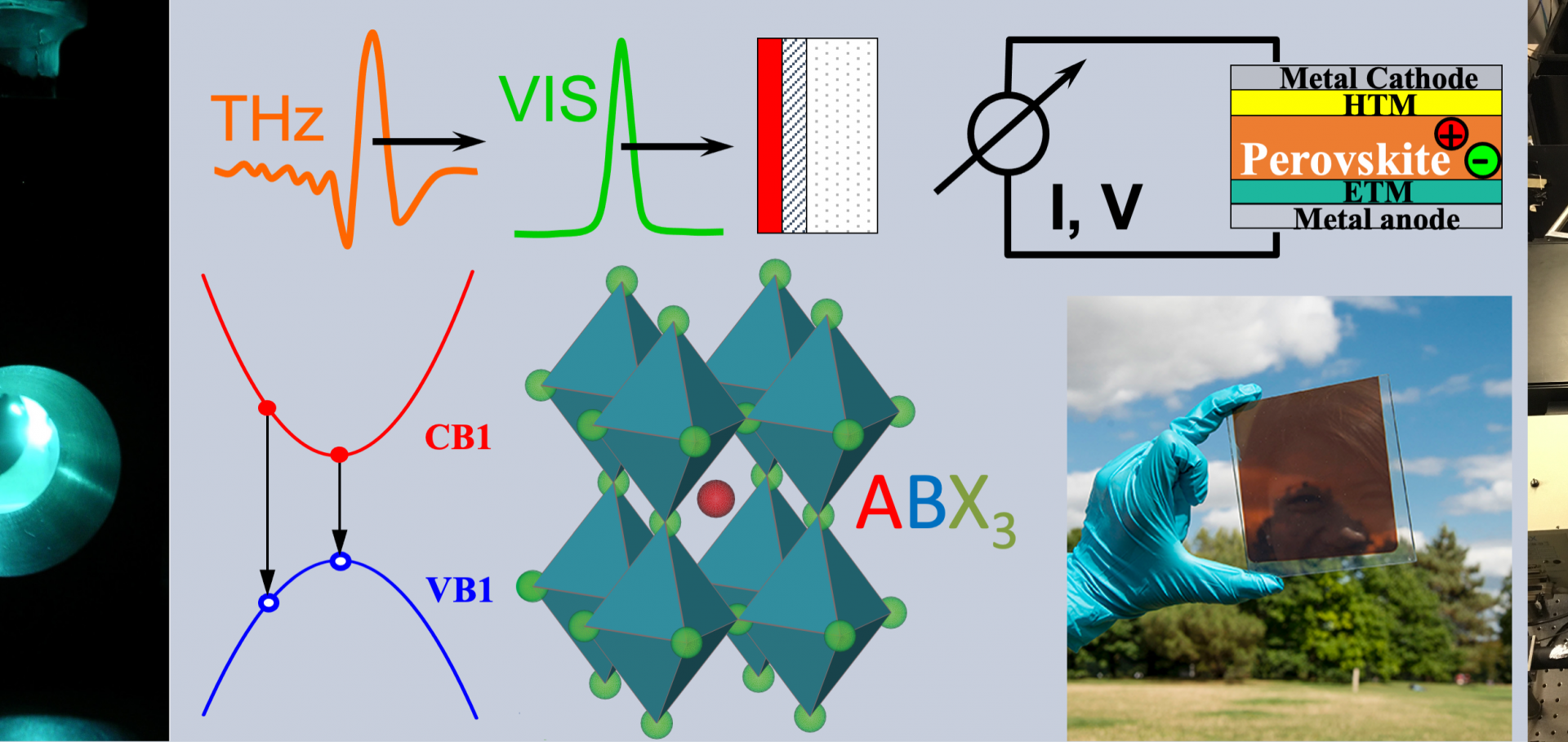Modification of the fluorinated tin oxide/electron-transporting material interface by a strong reductant and its effect on perovskite solar cell efficiency
Molecular Systems Design and Engineering Royal Society of Chemistry 3:5 (2018) 741-747
Abstract:
To date, the most efficient hybrid metal halide peroskite solar cells employ TiO2 as electron-transporting material (ETM), making these devices unstable under UV light exposure. Replacing TiO2 with fullerene derivatives has been shown to result in improved electronic contact and increased device lifetime, making it of interest to assess whether similar improvements can be achieved by using other organic semiconductors as ETMs. In this work, we investigate perylene-3,4:9,10-tetracarboxylic bis(benzimidazole) as a vacuum-processable ETM, and we minimize electron-collection losses at the electron-selective contact by depositing pentamethylcyclopentadienyl cyclopentadienyl rhodium dimer, (RhCp*Cp)2, on fluorinated tin oxide. With (RhCp*Cp)2 as an interlayer, ohmic contacts can be formed, there is interfacial doping of the ETM, and stabilized power conversion efficiencies of up to 14.2% are obtained.High irradiance performance of metal halide perovskites for concentrator photovoltaics
Nature Energy Nature Publishing Group 3 (2018) 855-861
Abstract:
Traditionally, III–V multi-junction cells have been used in concentrator photovoltaic (CPV) applications, which deliver extremely high efficiencies but have failed to compete with ‘flat-plate’ silicon technologies owing to cost. Here, we assess the feasibility of using metal halide perovskites for CPVs, and we evaluate their device performance and stability under concentrated light. Under simulated sunlight, we achieve a peak efficiency of 23.6% under 14 Suns (that is, 14 times the standard solar irradiance), as compared to 21.1% under 1 Sun, and measure 1.26 V open-circuit voltage under 53 Suns, for a material with a bandgap of 1.63 eV. Importantly, our encapsulated devices maintain over 90% of their original efficiency after 150 h aging under 10 Suns at maximum power point. Our work reveals the potential of perovskite CPVs, and may lead to new PV deployment strategies combining perovskites with low-concentration factor and lower-accuracy solar tracking systems.Impact of the organic cation on the optoelectronic properties of formamidinium lead triiodide
Journal of Physical Chemistry Letters American Chemical Society 9:16 (2018) 4502-4511
Abstract:
Metal halide perovskites have proven to be excellent light-harvesting materials in photovoltaic devices whose efficiencies are rapidly improving. Here, we examine the temperature-dependent photon absorption, exciton binding energy, and band gap of FAPbI3 (thin film) and find remarkably different behavior across the β–γ phase transition compared with MAPbI3. While MAPbI3 has shown abrupt changes in the band gap and exciton binding energy, values for FAPbI3 vary smoothly over a range of 100–160 K in accordance with a more gradual transition. In addition, we find that the charge-carrier mobility in FAPbI3 exhibits a clear T–0.5 trend with temperature, in excellent agreement with theoretical predictions that assume electron–phonon interactions to be governed by the Fröhlich mechanism but in contrast to the T–1.5 dependence previously observed for MAPbI3. Finally, we directly observe intraexcitonic transitions in FAPbI3 at low temperature, from which we determine a low exciton binding energy of only 5.3 meV at 10 K.Effect of Nanoscale Phenomena on Charge Conduction and Recombination Mechanisms in Hybrid Perovskites
Fundacio Scito (2018)
The Role of Photon Reabsorption in Masking Intrinsic Bimolecular Charge-Carrier Recombination in CH3NH3PbI3Perovskite.
Fundacio Scito (2018)


